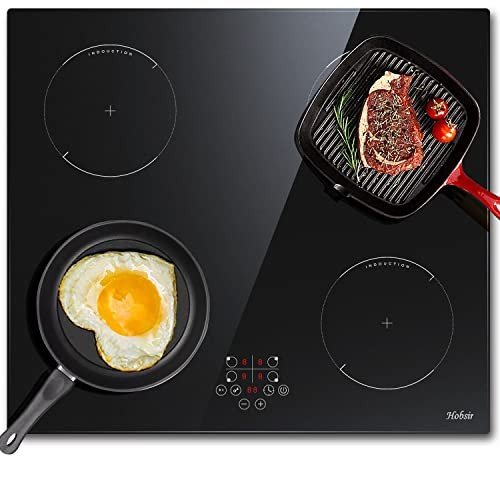An In-Depth Guide to Ovens and Hobs: Choosing the Right Appliances for Your Kitchen
When it concerns outfitting a kitchen, ovens and hobs are significant gamers. These devices not only dictate the efficiency of cooking processes however likewise contribute to the general visual and performance of the kitchen environment. This article will explore the different types of ovens and hobs, their functions, and considerations to remember when purchasing, along with helpful FAQs to assist readers get a deeper understanding of these essential kitchen home appliances.
Comprehending Ovens
Ovens are created to cook food utilizing heated air. They come in different types, each with distinct performances.
Types of Ovens
- Conventional Ovens: These are the most typical types. They use a heating element at the bottom, which heats up the air inside the oven.
- Convection Ovens: Equipped with a fan and exhaust system, convection ovens flow hot air evenly around the food, causing quicker and more even cooking.
- Microwave Ovens: These use electro-magnetic waves to heat food. Ovens & Hobs are perfect for reheating and preparing food in minutes.
- Steam Ovens: These use steam for cooking, which assists maintain moisture in foods and preserve nutrients.
- Wall Ovens: Built into kitchen walls, these ovens save area and often come geared up with sophisticated functions.
- Double Ovens: These consist of two separate oven compartments, enabling multiple dishes to be cooked at the same time at different temperature levels.
Key Features to Consider in Ovens
When selecting an oven, customers must think about the following functions:
- Size: Ensure that the oven suits your kitchen area while accommodating your cooking requires.
- Oven Capacity: Depending on household size and cooking routines, bigger capabilities might be essential.
- Temperature Range: A wider variety enables for versatile cooking methods.
- Energy Efficiency: Look for energy-efficient designs to minimize energy expenses.
- Smart Technology: Many contemporary ovens offer Wi-Fi connectivity and programmable features for convenience.
Checking out Hobs
Hobs, or cooktops, are essential for stovetop cooking. They can be varied based upon their heating methods and functions.
Types of Hobs
- Gas Hobs: These utilize gas flames for cooking and offer instantaneous heat, making it much easier to manage temperature levels.
- Electric Hobs: These utilize electric coils or a glass-ceramic surface for cooking. They are typically simpler to clean up and keep.
- Induction Hobs: Using electromagnetic fields, induction hobs warm up only when compatible cookware is put on them, making them energy-efficient and much safer.
- Dual-Fuel Hobs: Combining gas and electric aspects, dual-fuel hobs offer the best of both cooking techniques.
Key Features to Consider in Hobs
When acquiring a hob, think about these functions:
- Number of Burners: Depending on cooking requirements, consumers may prefer hobs with multiple burners.
- Size: Ensure it fits well with your offered kitchen counter space.
- Safety Features: Look for automatic shut-off and child lock features for added security.
- Ease of Cleaning: Smooth surface areas tend to be easier to tidy than conventional coils.
Ovens and Hobs Comparison Table
| Feature | Oven Type | Hob Type |
|---|---|---|
| Cooking Method | Baking, Roasting, etc. | Boiling, Frying, and so on. |
| Preheat Time | Differs | Instant for Gas |
| Temperature Control | Thermostat | Manual/Knob |
| Energy Efficiency | Energy rating varies | Depend upon type |
| Cleaning Flexibility | Self-cleaning choices | Smooth vs. Coiled |
| Smart Features | Wi-Fi, App control | Minimal features |
Regularly Asked Questions (FAQs)
1. What is the difference in between a conventional oven and a convection oven?
Conventional ovens count on heating components, while convection ovens utilize a fan to flow hot air for more even cooking.
2. Are induction hobs safe for families?
Yes, induction hobs are considered much safer as they just warm up when cookware is positioned on them and cool down rapidly when gotten rid of.
3. How do I clean my oven effectively?
Self-cleaning functions can streamline this process, however for manual cleaning, use a baking soda and vinegar paste to help get rid of difficult spots.
4. Is it worth purchasing a double oven?
For those who regularly prepare large meals or enjoy baking numerous dishes simultaneously, a double oven can be extremely useful.
5. What size hob should I purchase?
This mainly depends on your cooking requirements and available counter space. Common sizes include 60cm and 90cm hobs.
Picking the right oven and hob is critical for any kitchen. Each type includes its special features matched for numerous cooking needs and styles. Understanding the differences in between ovens and hobs, along with their particular performances, can help customers make notified choices. As innovation advances, more options are offered that integrate efficiency and functionality, making sure that cooking remains an enjoyable and effective part of everyday life. In picking devices that best fit your cooking design, you can change your kitchen into a center of culinary imagination.

